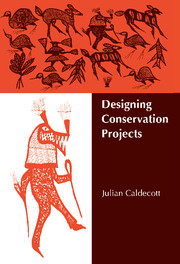Book contents
- Frontmatter
- Contents
- Foreword by Daniel H. Janzen
- Preface
- Acknowledgements
- 1 Introduction
- 2 Baram River, Sarawak
- 3 Cross River, Nigeria
- 4 Siberut and Flores Islands, Indonesia
- 5 Forest fragments in China and the Philippines
- 6 Costa Rican linkage projects
- 7 Irian Jaya, Indonesian New Guinea
- 8 Project themes and practicalities
- 9 Options for conservation
- 10 Options for development
- 11 Options for changing people's minds
- 12 Summary and conclusions
- Glossary
- Bibliography
- Index
2 - Baram River, Sarawak
Published online by Cambridge University Press: 04 February 2010
- Frontmatter
- Contents
- Foreword by Daniel H. Janzen
- Preface
- Acknowledgements
- 1 Introduction
- 2 Baram River, Sarawak
- 3 Cross River, Nigeria
- 4 Siberut and Flores Islands, Indonesia
- 5 Forest fragments in China and the Philippines
- 6 Costa Rican linkage projects
- 7 Irian Jaya, Indonesian New Guinea
- 8 Project themes and practicalities
- 9 Options for conservation
- 10 Options for development
- 11 Options for changing people's minds
- 12 Summary and conclusions
- Glossary
- Bibliography
- Index
Summary
Conservation issues
Land, people, and biodiversity
Borneo is about 740 000 km2 in area, and is divided into seven political units: the Malaysian States of Sabah and Sarawak, the Sultanate of Brunei, and the four Indonesian Provinces of East, West, Central and South Kalimantan (Fig. 2.1). At about 124 450 km2, Sarawak is the largest of the thirteen states of Malaysia, which it joined in 1963 after nearly 100 years as an independent country under the Brooke Rajahs, and brief periods of Japanese occupation and British colonial rule. This history sets Sarawak apart from other countries in South-east Asia, all of which other than Thailand had been ruled directly by powers from outside the region.
The Brooke administration in Sarawak had an unusually consultative style of government, which was summed up by Rajah Charles Brooke as follows: ‘A government such as that of Sarawak may start from things as we find them, putting its veto on what is dangerous or unjust, and supporting what is fair and equitable in the usages of the natives, and letting systems of legislation wait upon occasion. When new wants are felt, it examines and provides for them by measures rather made on the spot than imported from abroad; and to ensure that these shall not be contrary to native customs, the consent of the people is gained for them before they are put into force’ (the Sarawak Gazette of 1872, quoted in Brooke, 1913: xxiii–xxiv). This approach established a persistent tradition of tolerance and intimacy between government and rural people, which continued into the 1980s.
- Type
- Chapter
- Information
- Designing Conservation Projects , pp. 4 - 29Publisher: Cambridge University PressPrint publication year: 1996



